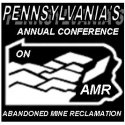In the first two quarters of 2016 (1/2016 to 6/2016), the EPCAMR Staff continued to focus their attention on providing technical assistance and support to conservation districts and other local governments as well as, community/watershed organizations, economic development organizations, and other partners in the abandoned mine reclamation (AMR) field of interest.
Within that charge, there are several tasks and deliverables that EPCAMR staff meet on an annual basis. Those are to:
- Provide technical assistance to at least one watershed association or non-profit organization in each sponsoring county conservation district of EPCAMR who requests assistance with grants & watershed projects related to abandoned mine drainage (AMD) remediation and abandoned mine land (AML) reclamation. EPCAMR staff provided technical assistance to 19 groups and conservation districts.
See More Those include: WPCAMR, Earth Conservancy, Stream Restoration Inc., Foundation for PA Watersheds, Luzerne Conservation District, Lackawanna County Conservation District, Lehigh County Conservation District, Schuylkill Conservation District, Columbia County Conservation District, Carbon County Conservation District, Dauphin County Conservation District, Sullivan County Conservation District, Mehoopany Creek Watershed Association, Mahanoy Creek Watershed Association, Shamokin Creek Restoration Alliance, Tri-Valley Watershed Association, Trout Unlimited (National, Western Pocono Chapter, and Stanley Cooper Chapter) and several more groups in attendance at our statewide conference. - Maintain EPCAMR Program Coordination to Conservation Districts in Eastern PA through Monthly Progress Report Documentation and Annual Reports.
See More Please see our Monthly Progress Report Documentation within our EPCAMR Board Page. - Ensure and support the implementation of local watershed restoration and protection plans such as Watershed Restoration Action Strategy (WRAS), Watershed Implementation Plans (WIP), and Qualified Hydrologic Unit Plans (QHUP), including plans to meet Total Maximum Daily Load (TMDL) objectives and to restore AMD impacted watersheds. EPCAMR staff worked specifically in 12 watersheds to plan, assess, develop, and/or implement TMDL objectives & watershed restoration action strategies.
See More Those include: Lackawanna Valley, Wyoming Valley (Black Creek, Newport Creek, Nanticoke Creek, Solomon Creek, Warrior Run, Hicks Creek, and Laurel Run), Schuylkill River, Rausch Creek, Good Spring Creek, Lehigh River (Hazle Creek) - Plan, Co-Sponsor, and Conduct the Annual PA AMR Conference in partnership with WPCAMR and other planning partners on the conference planning committee and participate in or sponsor regional workshops on AML issues throughout PA. EPCAMR staff co-hosted the PA AMR Conference on June 22-23,2016 at the Indiana University of Pennsylvania Kovalchick Conference Center in Indiana, PA.
See More See 2016.treatminewater.com website for more details. Please see our Monthly Progress Report Documentation within our EPCAMR Board Page for other regional workshops. - Provide data, GIS layers, and maps, as a public service to watershed groups and municipalities impacted by AMD/AML.
See More A list of the GIS Data & Map Services is on our EPCAMR website and physically through the EPCAMR GIS Technical Assistance Center (TAC) in the EPCAMR Office. A list of 70 general public and government assisted include the following: PA Department of Environmental Protection (Harrisburg, California DMO, Pottsville DMO, BAMR Wilkes-Barre, BAMR Ebensburg, MRAB), PA Department of Community and Economic Development, PA Game Commission, PA Association of Environmental Educators, Susquehanna River Basin Commission, Delaware River Watershed Coalition, Middle Susquehanna Riverkeeper, PA American Water, Office of Surface Mining Reclamation and Enforcement, AmeriCorps, PA Department of Transportation, US Fish and Wildlife Service, Army Corps of Engineers, State Senator Yudichak, Weatherly Borough Planning Commission, Greater Pittston Historical Society, PA American Water, PennFuture (NE Office), Wyoming Seminary, Penn-East Pipeline Company, Nanticoke City, Warrior Run Borough, Ashley Borough, Shickshinny Borough, Plains Township, Laflin Borough, Larksville Borough, Edwardsville Borough, Swoyersville Borough, Courtdale Borough, Forty Fort Borough, Luzerne Borough, Hanover Township, Wilkes-Barre City, Wilkes-Barre Township, PA Anthracite Council, US Geologic Survey, Western PA Conservancy, PA Department of Conservation and Natural Resources, CSI Environmental, Hydration LLC, Talen Energy, Ridge Global Inc., Rausch Creek Partners LLC, Skelly & Loy, PA Anthracite Section of the Society of Mining Engineers, Citizens’ Voice, Times Leader, Hazleton Standard Speaker, Scranton Times, Luzerne County Community College, Penn-State University, King College, Susquehanna University, Lafayette College, McGlynn Learning Center, Wilkes-Barre Area School District, Maternal Health and Family Services, United Neighborhood Centers, Keep PA Beautiful, Biomost, McClane & Associates, Larson Design Group, LandStudies, Northampton Fuels Supply and several more in attendance at our statewide conference. - Provide general EPCAMR Board Administration to increase communication and facilitation with the EPCAMR Board in order to strategically plan and conduct meetings.
See More Please see our Past EPCAMR Quarterly Meetings within our EPCAMR Board Page. - Maintenance of epcamr.org and treatminewater.com and provide information to the WPCAMR’s AMRClearinghouse.org websites.
See More We had 11,126 views by 5,306 visitors in 89 different countries for epcamr.org alone (statistics from wordpress.com). Please see our www.epcamr.org, www.treatminewater.com and WPCAMR’s www.AMRClearinghouse.org websites, respectively. - Suggest to the PA DEP Section 319 Program Stream Segments in the EPCAMR Region that should be reassessed where improvements have been made to streams or segments previously on the 303 (d) List that stand a good chance of being removed from the List with supporting water quality monitoring or biological monitoring evidence.
See More There were no new treatment systems funded nor improving water bodies documented in this time period.
In this age of information and transparency, no one simply wants to see a summary-style annual report. They want details! We encourage you to visit our website, especially our news page which is in chronological order and searchable. Our current initiatives page is also a great place to see our most recent and future programs.











